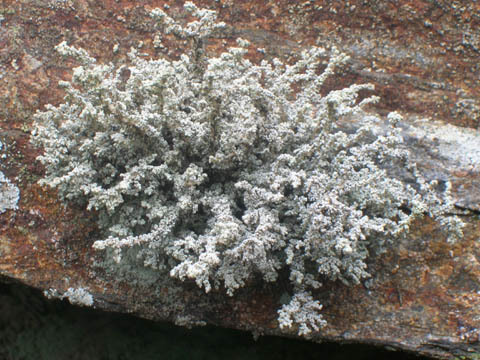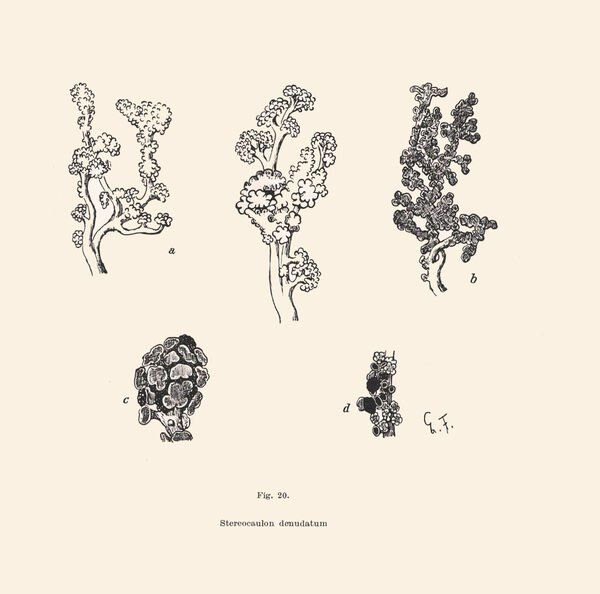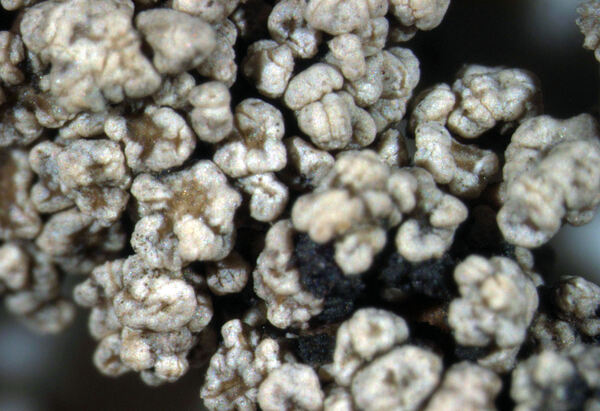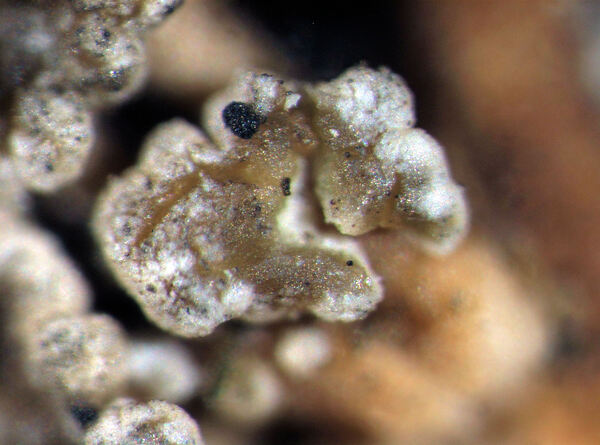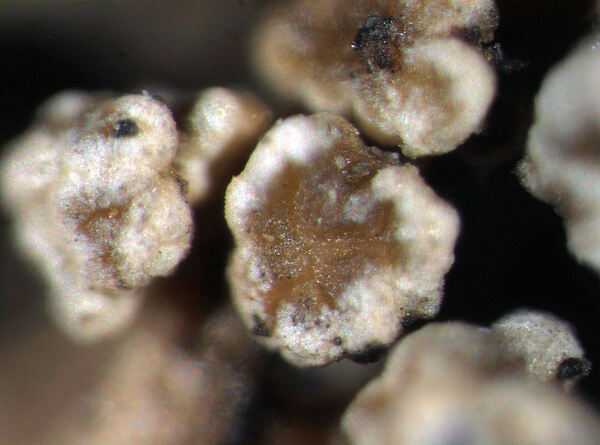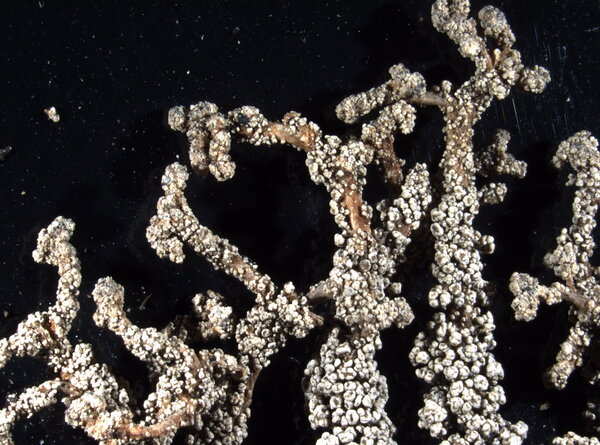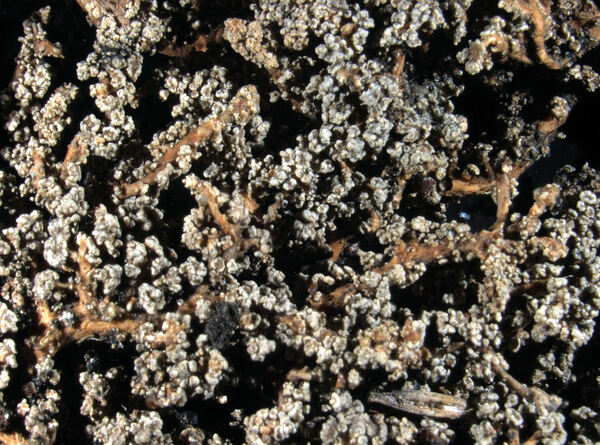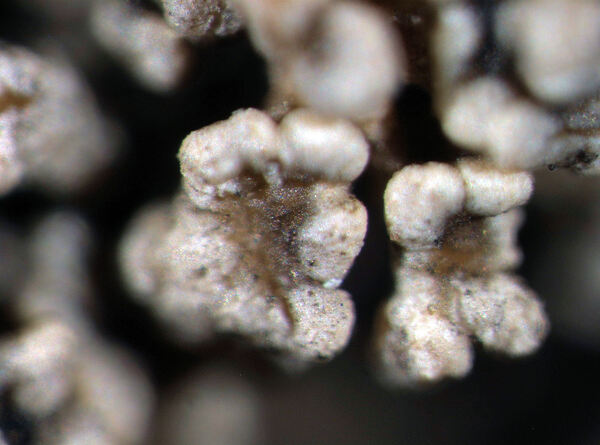Stereocaulon vesuvianum var. nodulosum (Wallr.) I.M. Lamb
in Poelt, Bestimmungss. europ. Flechten: 633, 1969.. Basionym: Patellaria paschalis var. nodulosa Wallr. - Fl. crypt. Germ., 1: 441, 1831.
Synonyms: Stereocaulon denudatum Flörke; Stereocaulon denudatum Flörke var. depressum H. Magn.; Stereocaulon vesuvianum Pers. f. depressum (H. Magn.) I.M. Lamb; Stereocaulon vesuvianum Pers. var. denudatum (Flörke) I.M. Lamb ex Poelt comb. inval.; Stereocaulon vesuvianum Pers. var. depressum (H. Magn.) I.M. Lamb
Distribution: N - Lomb (Ravera & al. 2022)
Description: Primary thallus crustose, ephemeral, usually absent in mature individuals. Pseudopodetia with a solid cartilaginous axis of parallel hyphae surrounded by a lax medulla, 1-4 cm tall, firmly attached, more or less caespitose, erect to decumbent, completely glabrous, whitish or greyish, dark at the base, branched in upper part, often sorediate. Phyllocladia in most cases almost entirely covering the pseudopodetia, small, often verrucose, the largest usually peltate, flattened or concave, at least some of them with a dark olive-coloured central part and paler margins, partly confluent, forming plate-like squamules. Cephalodia rare, verruculose, dark olive brown, containing Stigonema. Apothecia rare, 0.5.1 mm across, on lateral branches, with a dark brown disc. Paraphyses simple, slightly thickened above, with dark cap; hymenium and hypothecium colourless. Asci 8-spored, clavate to cylindrical, Porpidia-type. Ascospores septate, hyaline, fusiform. Spot tests: thallus K+ yellow (rarely K+ red), C-, KC-, P+ orange, UV-. Chemistry: atranorin, and variable amounts of stictic and norstictic acids.
Note: a name used for morphs with glabrous podetia and partly confluent phyllocladia forming plate-like squamules, sorediate or not, most often found on metal-rich rocks; reported from both Hemispheres, including Europe, but not always distinguished; probably more widespread in the Alps, incl. the Italian Alps.
Growth form: Fruticose
Substrata: rocks
Photobiont: green algae other than Trentepohlia (primary); cyanobacteria, filamentous (e.g. Nostoc, Scytonema) (secundary, e.g. in cephalodia)
Reproductive strategy: mainly sexual
Species of metal-rich rocks
Poorly known taxon in need of further study
Commonnes-rarity: (info)
Alpine belt: absent
Subalpine belt: extremely rare
Oromediterranean belt: absent
Montane belt: extremely rare
Submediterranean belt: absent
Padanian area: absent
Humid submediterranean belt: absent
Humid mediterranean belt: absent
Dry mediterranean belt: absent
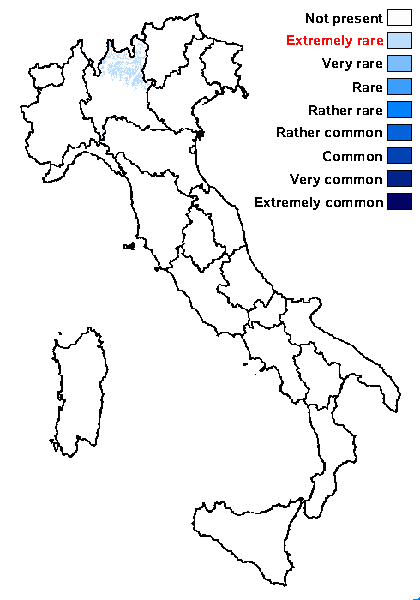
Predictive model
Herbarium samples
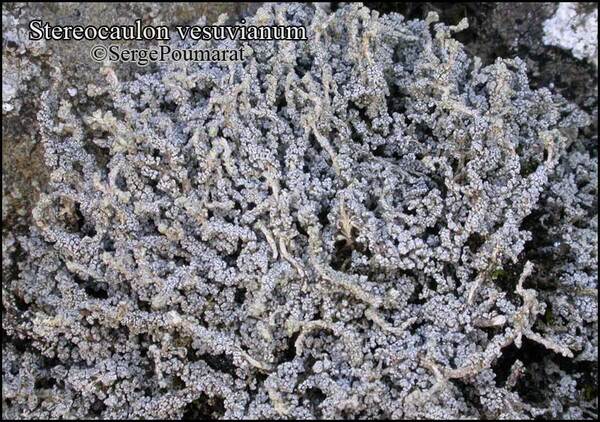
Courtesy Danièle et Olivier Gonnet - Source: https://www.afl-lichenologie.fr/Photos_AFL/Photos_AFL_S/Text_S/Stereocaulon_vesuvianum.htm
France, session AFL 2013 - Puy-de-Dôme
Growth form: Fruticose
Substrata: rocks
Photobiont: green algae other than Trentepohlia (primary); cyanobacteria, filamentous (e.g. Nostoc, Scytonema) (secundary, e.g. in cephalodia)
Reproductive strategy: mainly sexual
Species of metal-rich rocks
Poorly known taxon in need of further study
Commonnes-rarity: (info)
Alpine belt: absent
Subalpine belt: extremely rare
Oromediterranean belt: absent
Montane belt: extremely rare
Submediterranean belt: absent
Padanian area: absent
Humid submediterranean belt: absent
Humid mediterranean belt: absent
Dry mediterranean belt: absent

Predictive model
| Herbarium samples |

 Index Fungorum
Index Fungorum
 GBIF
GBIF
